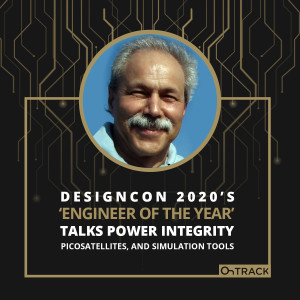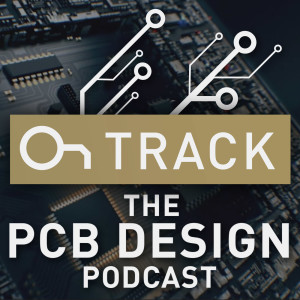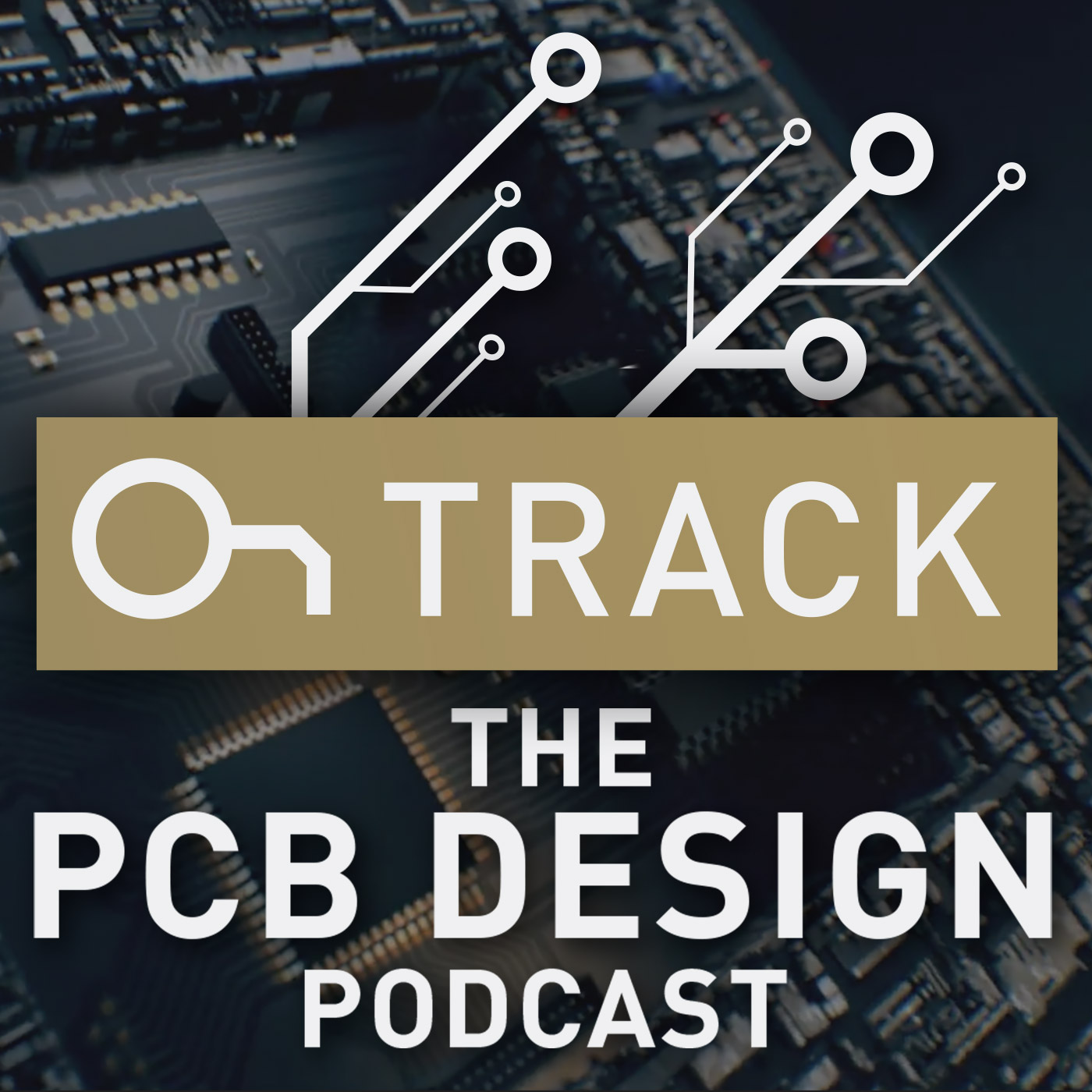Episodes

Thursday Aug 03, 2023
The Impact of the Defense Sector in the Electronic Industry Ecosystem
Thursday Aug 03, 2023
Thursday Aug 03, 2023
We have a very interesting topic today! The impact of the defense sector on the electronic industry.
Our guest Nathan Edwards, an Executive Director, U.S. Partnership for Assured Electronics (USPAE) will share with us what goes in a Defense Electronic Consortium (DEC) and how all of these impact the electronics eco-system. We will also touch a little about supply chain diversification and onshoring efforts here in the US.
Watch through the end, this is a very special episode you don’t want to miss.
We have a very interesting topic today! The impact of the defense sector on the electronic industry.
Show Highlights:
- Introduction to Nathan Edwards
- Nathan briefly share his background in the electronic industry in both government and commercial sector
- What is United States Partnership for Assured Electronics (USPAE) and what is its involvement in the Defense Electronic Consortium (DEC)?
- Nathan explains what goes on DEC
- Small and medium size electronic companies could benefit in participating in the government ecosystem
- A study shows that 86% of 649 manufacturing firms receive less than 10% of their revenue from defense
- Electronics in the banking industry, from the tamper-proof electronics, security, authenticity, and some reliability and recovery
- Is something similar to the US Defense Electronics Consortium exist in different countries?
- Nathan discusses about the recent policy chain in the Defense Production Act, Title II
- Electronic supply chain diversification and onshoring in the United States
- A policy that will go in to effect in 2027 under the National Defense Authorization Act states that semiconductors, printed circuit boards and interconnects cannot be produced by some of the companies in China
- Nathans thoughts regarding production of electronic components in Latin America, especially Mexico
- Nathan volunteers to mentor emerging talents at his school district’s high school and middle school and get them involved in electronics sector
- The electronics industry requires a full depth of STEM from chemist, manufacturers, mathematician, designers and more
- Career Technical Education (CTE) offers biomedical tech, STEM, IT, and it is sponsored under the State Department of Educations as well as the Federal Department of Education
- Two critical things to a successful onshoring are reliable, skilled workforce, and capital to invest in the state-of-the-practice equipment
Links and Resources:
- Reinventing the business of electronics. Nexar puts your business ahead of the curve, learn more here
- Watch related, previous episodes:
- Connect with Nathan Edwards via LinkedIn

Tuesday Mar 22, 2022
3D Printing Circuit Boards for Fast Prototyping
Tuesday Mar 22, 2022
Tuesday Mar 22, 2022
Let’s talk about the future of printed circuit board prototyping. Sean Patterson, the President of Nano Dimension USA is here to introduce the technology behind DragonFly IV®, the multi-material 3D printer for electronics fabrication. He will walk us through its current capabilities, what it can do and what we may expect from it in the future.
Sit back, relax and enjoy this episode. Make sure to listen through the end and check the show notes with the additional resources below.
Altium 365: Where the World Designs Electronics
Show Highlights:
- Sean talks about the growing company.
- They have 39 members in the US, and 500 globally. There are still plenty of roles available, visit Nano Dimension’s website here
- Started as an additive manufacturing company, specifically for circuit boards to now multi-material, and multi-layer 3D printing option for electronics through
- Sean excitedly shares all the exciting things that the DragonFly IV can do.
- Faster electronic prototyping and proof of concept
- Environmental and sustainability advantages
- A manufacturing plant in the office
- An electromechanical structure that's functionally, mechanically, and electrically, to solve a problem
- The evolution of electronic manufacturing offers a solution that works–there are many better ways, weight reduction, and size reduction
- Nano Dimensions is helping the electronics industry ecosystems systems get prepped now, to support the adoption of this technology
- DragonFly IV uses FR4-like, and the conductive ink is a silver nanoparticle
- What’s the future look like for Nano Dimensions?
- What materials will be available in the future?
- What will be the ultimate capability of the DragonFly?
Links and Resources:
Connect with Sean Patterson on LinkedIn
Visit Nando Dimension’s website here
Full OnTrack Podcast Library
Altium Website
Download your Altium Designer Free Trial
Learn More about Altium Nexus
Altium 365: Where the World Designs Electronics

Tuesday Jul 07, 2020
Tuesday Jul 07, 2020
Istvan Novak, Principal Signal and Power Integrity Engineer for Samtec Inc. and winner of the DesignCon 2020 Engineer of the Year Award joins the OnTrack podcast to talk picosatellites, simulation tools, and the rising importance of power integrity.
Altium 365 Podcast Listener Discount
Show Highlights
- Introduction to Istvan Novak
- A brief look at Samtec Inc., the successful computer equipment manufacturing company headquartered in Indiana.
- Istvan’s path to becoming a Power Integrity expert
- CubeSats and the students who make them
- The challenges of dimensionality: has power integrity become more important than signal integrity?
- When Power Integrity is an afterthought
- The value of expert disagreement
- “Regardless of what we want to simulate, we can find good simulation tools to do it”: Good design and the challenges of modeling and simulation
- Closing thoughts; the first working Picosatellite; and the first electrosmog map of the globe
Resources:
- Istvan Novak on LinkedIn
- Samtec: gEEk spEEk SI Webinars.
- Samtec Silicon-to-Silcon Solutions Website
- The SI-List Archives
- Istvan Novak: DesignCon 2020 Engineer of the Year Award
- BUDAPEST UNIVERSITY OF TECHNOLOGY AND ECONOMICS Picosatellite
- Istvan Novak’s Electrical Integrity Website
- Picotest Website
- Signal Integrity Journal
- Design 007 Magazine, See pg. 38 Do You Really Need That Ferrite Bead in the PDN?
- First Electrosmog Map of the globe

Tuesday Feb 05, 2019
Printed Electronics Applications and Innovations
Tuesday Feb 05, 2019
Tuesday Feb 05, 2019
The use of printed electronics is on the rise, and Chris Hunrath from Insulectro is here to talk about how to design for it. Learn about the different applications and design possibilities that are available to PCB designers. The proliferation of more advanced printed electronics materials from polyester film, polycarbonate, to transfer film for fabric and flexible circuitry have enabled interesting new applications for printed electronics. Listen in to learn the latest from Chris Hunrath, an expert in material supplies for circuit board design.
Watch the video, click here.
Show Highlights:
- Insulectro has seen a significant growth in sales of printed electronics products, this is an area of massive growth.
- Printed Electronics have traditionally been used in RFID along with metal f
- oils such as anti-theft devices and security access cards - items with conductive inks and membrane touch switches, for example: coffee makers, dishwashers, rear window defoggers, etc.
- Interesting new applications include: glucose test strips, wearables - sensors of all kinds, automotive, and self darkening windows.
- Self darkening windows are used in skyscrapers and aeroplanes, silver conductive ink, placing current on the window, giving the user control and saving energy.
- Printed Electronics is a high-growth area: business doubled every year in the past five years, doing very well in both substrates and inks.
- Predominant applications driving this uptick in usage: Capacitive Touch switching, in general it saves costs, lighter in weight and has no moving parts (i.e. car dashboards: a lot of work being done on it today) makes it more reliable.
- The molded structure: print the matte side and ink moves with plastic when molding, circuitry is totally encapsulated in the injection molding process.
- Ink technology: silver is used and is cheaper than gold and more conductive; silver flake or conductive particles make it possible to have the ink move with the plastic.
- Insulectro offers materials for Printed Electronics, some examples: polyester film - trade name Mylar and other brands, polycarbonate, transfer film for fabric and flexible circuitry in wearables.
- What’s the difference between conventional and printed electronics? Conductivity, and Resistance - know the sheet resistance and use a comparable copper thickness and width.
- Altium Designer 19 and Tactotek, who do in-mold structural electronics are working on relative design features in Altium.
- Printed Electronics whiteboard video
- There are inks that can sense chemistry and can be ion selective i.e. blood glucose, natural gas, carbon monoxide and so forth,
- Applications in wearables: Neural bypass, can pick up nerve impulses, movement sensors, chemistry sensors and more, and can withstand several washings.
- Higher silver loading inks can be used in many different applications.
- Chris shows an example of printed antenna that uses silver inks.
- Can be used in materials that you couldn’t use in a traditional PCB process.
- Conductive ink kits for children - you can draw conductive inks with a pen.
- Chris shows an example of substrate with high temperature ink, that has a 500-degree operating temperature.
- Events where you can see examples at the Insulectro booth: IPC Apex in San Diego, DesignCon in Santa Clara and Insulectro typically at IT TechEX.
- Conductive adhesive is more ideal for components, soldering to printed electronics is very delicate.
- Screen printing is the main way to print and is very scalable.
- Printed electronics is easier and cheaper to get started and environmentally more friendly.
- Stay posted for more developments in this exciting field!
Links and Resources:
Tactotek IMSE / Printed Electronics Podcast

